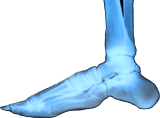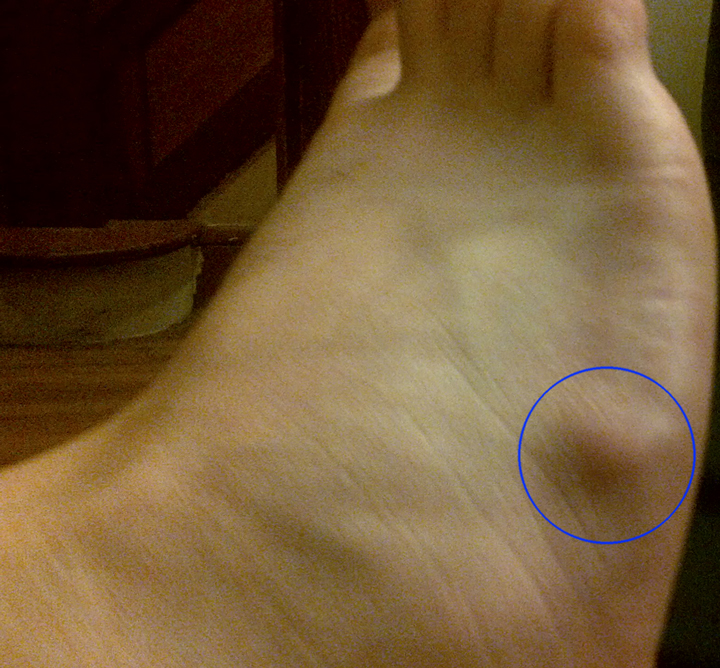
Affiliated Foot Care Center
Call 860•349•8500 or 203•294•4977

Ganglion cysts are usually associated with the joints and tendons of the appendicular skeleton, with 88% in communication with the multiple small joints of the hand and wrist and 11% with those of the foot and ankle.
The most commonly accepted cause of ganglion cysts is the "herniation hypothesis", by which they are thought to occur as "an out-pouching or distention of a weakened portion of a joint capsule or tendon sheath." This description is based on the observations that the cysts occur close to tendons and joints, the microscopic anatomy of the cyst resembles that of the tenosynovial tissue, the fluid is similar in composition to synovial fluid, and dye injected into the joint capsule frequently ends up in the cyst, which may become enlarged after activity. Dye injected into the cyst rarely enters the joint, however, which has been attributed to the formation of an effective and one-way "check valve" allowing fluid out of the joint, but not back in.
Synovial cysts, posttraumatic degeneration of connective tissue, and inflammation have been considered as the causes. Other possible mechanisms for the development of ganglion cysts include repeated mechanical stress, facet arthrosis, myxoid degeneration of periarticular fibrous tissues and liquefaction with chronic damage, increased production of hyaluronic acid by fibroblasts, and a proliferation of mesenchymal cells. Ganglion cysts also may develop independently from a joint.
A ganglion cyst (also known as a bible bump) is a swelling that often appears on or around joints and tendons in the hand or foot. It looks like a sac of liquid (cyst). Inside the cyst is a thick, sticky, clear, colorless, jellylike material. Depending on the size, cysts may feel firm or spongy.
Ganglion cysts arise spontaneously or from an obscure or unknown cause, but presumably reflect a variation in normal joint or tendon sheath function. Cysts near joints are connected to the joint and the leading theory is that a type of check valve forms that allows fluid out of the joint, but not back in. The cyst contains clear fluid similar to, but thicker than normal synovial fluid.
We can treat ganglion cysts, either through aspiration, or drawing the fluid in the cyst out with a needle and injecting anti-inflammatory medication or through the use of surgery.